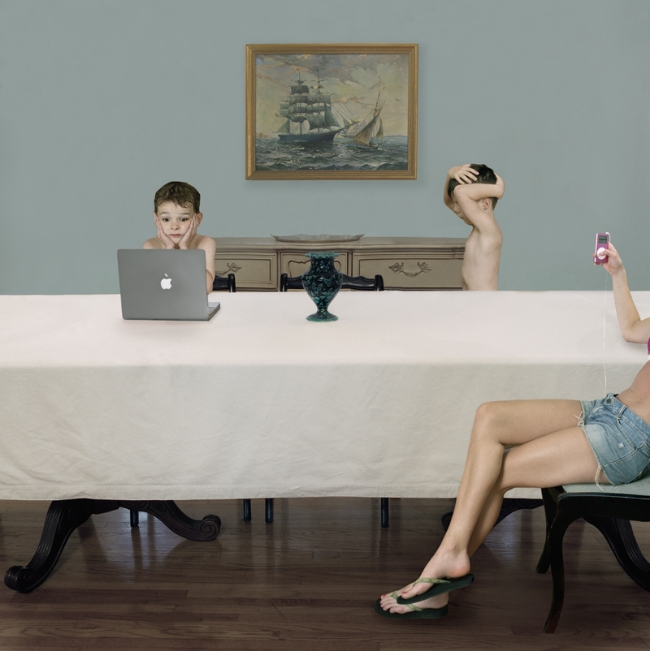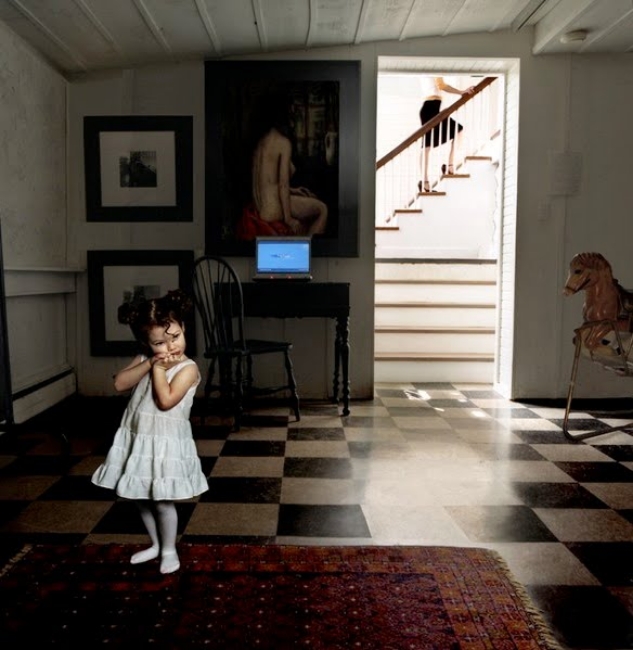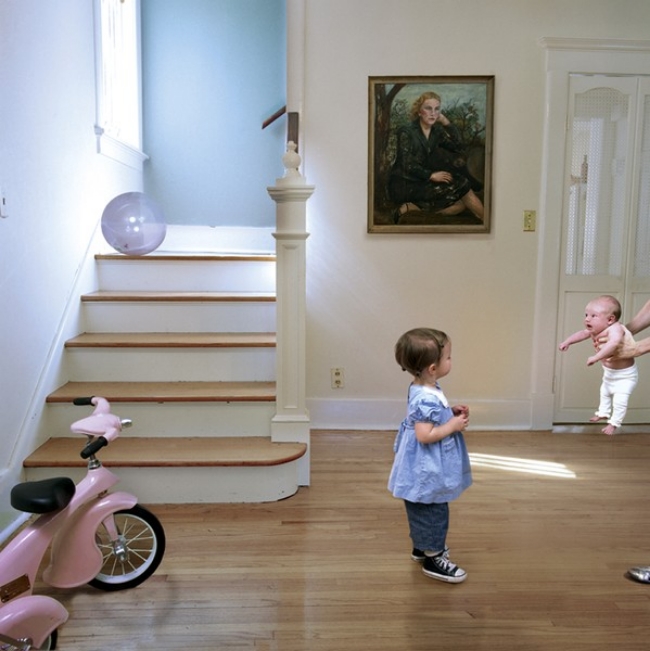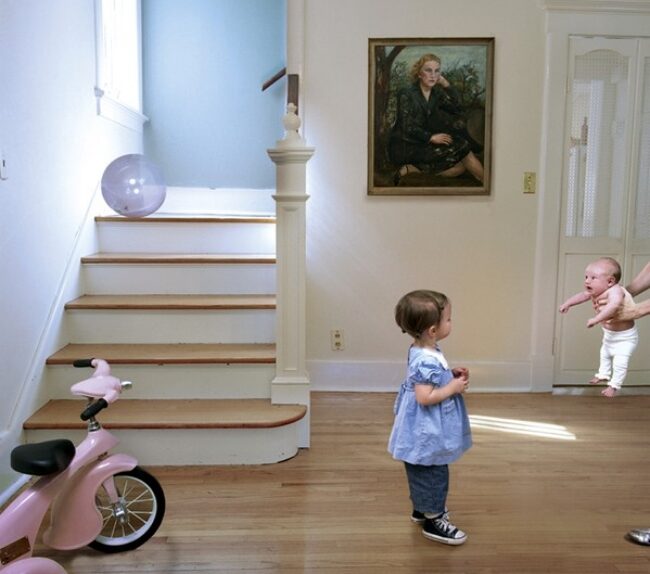I was drawn to the title of Julie Blackmon’s recent photographic series: Domestic Vacations. It’s a whimsical contradiction. I’d never heard of Blackmon, but the title and the first photo I saw in the series was enough to intrigue me. I wanted to see more, to know more.
Julie Blackmon, born in Springfield, MO in 1966, is the oldest of nine children and the mother of three–two girls and a boy. Her subject is her family. Well, no, that’s not entirely true. Her subject (as I understand it) is the white American suburban family. No, that’s not quite true either. Her subject is the delicate balance between domestic order and domestic chaos that exists within the white American suburban family. Well, wait–that’s still not exactly accurate. Her subject is the delicate balance between domestic order and domestic chaos that exists within the white American suburban family, semi-interpreted through a lens provided by the Dutch Golden Age painter Jan Steen.

A very quick tangent: Jan Steen is famous for theatrical, semi-realistic depictions of the daily lives of ordinary Dutch people. His work is full of humanity, a sort of cheerful humor, and a generally optimistic view of humanity. Julie Blackmon takes the same essential approach to her photography.
She treats her photography with the same care, consideration, and discipline with which she treats her family. Using a medium format Hasselblad, Blackmon carefully arranges the elements of her photographs to emulate Steen’s renaissance perspective. She adds some aspects of modern domesticity, then drops in the most vital and chaotic facets of the photograph: children.
The photographs in the Domestic Vacations series are whimsical and (as noted in the title) contradictory. The images are classic interior photographs; still, composed, quiet. They’ve also got all the elements of classic child portraits. This is where the contradictions attach; children and stillness aren’t exactly mutually exclusive, but they’re rarely seen together. It’s as if these photos were taken during a momentary pause in time. They are, in fact, the conflation of fantasy and fact, a prettified–almost surreal–version of real life.

It’s that delicate balance between domestic order and domestic chaos that intrigues Blackmon and informs her art.
“I believe there are little sanctuaries that can be found throughout any given day, no matter how ordinary, that reveal meaning. It is in finding these moments amidst the stress of everyday that my life as a mother parallels my work as an artist.”
Blackmon dropped out of Missouri State University to get married and raise a family. She took what she calls “the usual photographs” of her children, but it wasn’t quite enough. “I wanted to take some pictures of the kids, and I wanted to get some technique.” She returned to college after the birth of her third child, where her eye and technique caught the attention of her instructor. With his encouragement, she began to shoot differently, with a mind toward exhibition rather than documentation.

And it worked. She garnered attention first from local galleries, then from prominent galleries in Boston, L.A. and Santa Fe. Her work began to appear in photographic magazines. National Geographic has asked her to participate in a book on digital photography. The attention, she says, only adds to the unreality; “It’s difficult to think of oneself as an artist when you’re picking up the Legos your child left in the hallway.“
It’s that balance, the perilous equilibrium between the highly orchestrated photographic settings and the inclusion of living children–the poise between the formal composition and the potential chaos–that gives Blackmon’s work a dynamic quality. One feels that the scene is teetering on the edge between tranquility or pandemonium; in the next instant some trivial incident could immediately and loudly disrupt the entire household. Or perhaps everybody will settle in for a nice nap.
Julie Blackmon’s worlds—her real life world and the world of her photographs—are full of chaotic potential. That makes them exciting.

